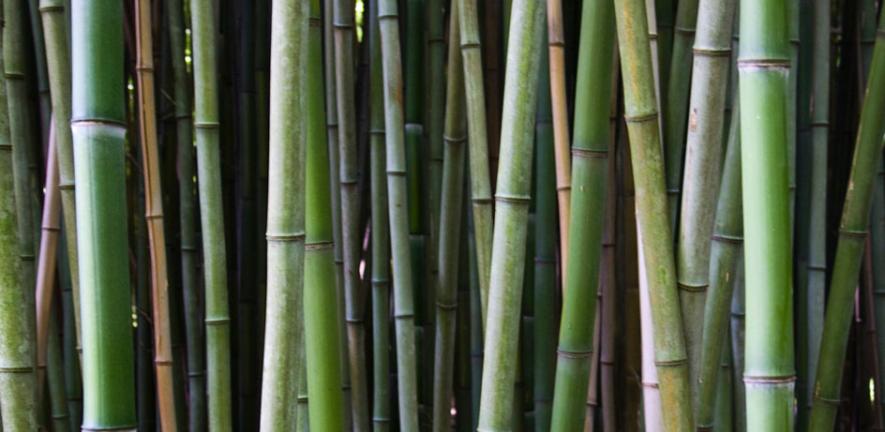
Bamboo – one of China’s most precious commodities – is showing great promise as the material of choice for building wind turbines.
Bamboo – one of China’s most precious commodities – is showing great promise as the material of choice for building wind turbines.
What’s particularly attractive about this technology is that bamboo brings a new perspective to carbon trading because bamboo sequesters carbon from the atmosphere, building it into high-strength fibres.
Jim Platts
As increasing attention turns to how we might generate energy from sustainable and renewable sources – from the natural resources of wind, solar and tidal power, among others – research in the development of the best materials to harness this energy is imperative. Jim Platts from the Institute for Manufacturing has worked for over 20 years on wind turbine design and most recently on developing a new type of blade made from bamboo.
Blade technology
The large rotating blades that make up wind turbines must work at the limits of their tensile strength when facing into the wind and revolving the turbine shaft that generates electricity. From the beginning, the best blades have used wood – Nature’s own fibre-reinforced composite material – as the primary structural material, comprising some 70% of the weight of the blade. Wood has excellent fatigue behaviour and an unbeatable strength-to-cost ratio, as well as being a low-energy input material. As Jim Platts explains: ‘Most people don’t think of wood as a technical material, but it has superb properties: wood uses more than an order of magnitude less energy input to provide the required stiffness compared with materials such as fibreglass, steel and aluminium. In energy technology terms, this ranks it as a technical material of the highest order.’
The bonus of bamboo
Early blades in the 1980s used African mahogany, moving on to poplar, and then more recently to Finnish birch. But there is one type of wood that is better than all of these in having the most ideal properties for blade construction: bamboo (particularly the variety known as Mao bamboo). For China, which has about 2.8 million hectares of Mao bamboo, much of which grows on mountainous areas unusable for farming, this is an exciting new use of a material that has been employed in many different ways for thousands of years.
Jim Platts has been working in China and Cambridge, analysing the tensile strength and stiffness properties of bamboo and identifying how best to select and prepare bamboo to provide maximum benefits in blade design. Meanwhile, in China, the manufacturing and supply routes are being forged, and it’s anticipated that the first blades will be made by the end of this year.
‘What’s particularly attractive about this technology,’ he comments, ‘is that bamboo brings a new perspective to carbon trading because bamboo sequesters carbon from the atmosphere, building it into high-strength fibres. In constructing wind turbine blades from bamboo, the blades have captured enough wind energy to pay back the energy used in their construction after just two days – an impressive statistic for a turbine with an average life of 20 years.’
As China readies itself to develop its own wind turbine industry, Jim Platts and his Chinese partners have shown that bamboo can be used as an alternative to energy-intensive fibres and polymers for this high technology application. The use of bamboo in this way makes wind energy an attractive proposition for future sustainable electricity generation.
For further information, please contact Jim Platts (mjp@eng.cam.ac.uk) at the Institute for Manufacturing in the Department of Engineering.
This work is licensed under a Creative Commons Licence. If you use this content on your site please link back to this page.





